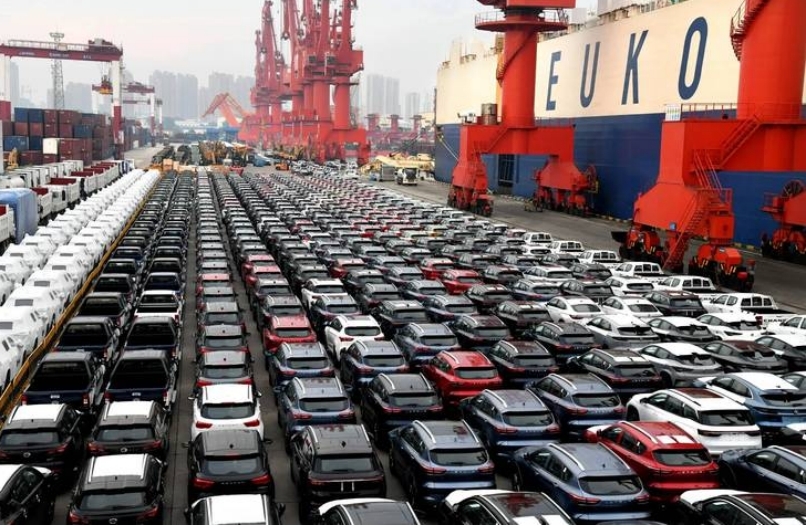
On September 16th, a tariff adjustment announcement from the US government stirred up the global automotive trade circle - Japan's auto import tax was reduced from 27.5% to 15%, and it officially took effect at 13:01 Tokyo time on the same day. This seemingly simple tax rate change is closely related to the US-Japan alliance, the global automotive industry landscape, and the current complex international economic competition. It is by no means as simple as a single trade policy adjustment.
From the perspective of the bilateral relationship between the United States and Japan, this move carries a clear signal of "deepening the alliance". The automotive industry is one of the pillars of Japan's economy. In 2024, Japan exported automobiles worth approximately 6 trillion yen to the United States, and the export of automobiles and auto parts accounted for one-third of Japan's total exports to the United States. As an important overseas market for Japanese automobiles, the United States may bring hundreds of millions of dollars in profit margins to Japanese automakers for every one percentage point reduction in tax rates. The share prices of Japanese automakers such as Toyota and Honda rose sharply in the short term after the news was announced, which was a direct response from the market to this policy. Previously, on April 3rd, the United States significantly raised the import tariff on Japanese automobiles from 2.5% to 27.5%, causing Japan's exports to the United States to decline year-on-year for three consecutive months. In June, the export value of automobiles dropped sharply by 26.7%. Automakers highly dependent on the United States, such as Mazda and Subaru, suffered heavy losses. Mazda turned from profit to loss of 42.1 billion yen in the second quarter. This reduction in the import tax on Japanese automobiles can be regarded as a response by the United States to Japan's previous various "cooperative" postures, which is conducive to strengthening the alliance between the United States and Japan.
From the perspective of the global automotive industry's competitive landscape, this adjustment also implicitly checks and balances other automotive exporting countries. At present, the penetration rate of Chinese new energy vehicles in the global market is continuously rising, while European automakers are seeking a balance between traditional fuel vehicles and the transition to new energy. The United States previously imposed tariffs on automobiles and auto parts in many countries. Now, it has only "loosened restrictions" on Japan, which inevitably reminds people of its "selective support" in the automotive industry. By reducing the import cost of Japanese automobiles, it can not only provide more choices for domestic consumers in the United States, but also leverage the profound advantages accumulated by Japanese automakers in the fields of fuel vehicle technology and hybrid technology to form a restraining effect on other competitors in the global automotive market competition. The complementarity between Japanese and American automakers is relatively strong. This "win-win cooperation" model is obviously more in line with the current industrial interests of the United States.
The timing of this policy's introduction is also closely related to the recent pace of global economic recovery. At present, many countries are confronted with problems such as slow easing of inflationary pressure and insufficient consumer demand. The domestic auto market in the United States also faces tight supply chains and high prices of new cars. Reducing the import tax on automobiles in Japan can, on the one hand, increase the supply of automobiles in the US market, relieve the cost pressure on consumers' car purchases, and indirectly help bring down inflation. On the other hand, it can also inject new growth momentum into the economies of the two countries by expanding the scale of trade between the United States and Japan. At a time when global trade protectionism is still on the rise, the easing of trade restrictions between the United States and Japan can bring a glimmer of warmth to the already sluggish global trade market.
However, this policy may also trigger a chain reaction. Other auto exporting countries might question the "differential treatment" of the United States and even take countermeasures. Some domestic automakers in the United States may also call on the government to introduce more protective policies due to the increasing competitive pressure from Japanese automobiles. The Council on Automotive Policy of the United States pointed out that the 15% tariff on imported cars from Japan is significantly lower than the 25% rate from Canada and Mexico, and believes that this has an adverse impact on the US automotive industry and workers. How to balance the interests of all parties in the future will be a challenge that the US government needs to deal with.
The recent adjustment of the import tax on Japanese automobiles by the United States is essentially a choice made based on its own strategic interests, alliance relations and economic demands. In the current context of constantly changing global political and economic landscapes, such trade policy adjustments might just be the beginning. There will be more similar "chess game changes" in the future, profoundly influencing the industrial development and trade exchanges of various countries.

The U.S. AI industry in 2025 is witnessing a feverish feast where capital and technology intertwine: from OpenAI’s valuation surging to $300 billion, to tech giants scrambling to pour hundreds of billions of dollars into expanding computing infrastructure, and the government rolling out national-level support initiatives such as the Genesis Mission, the entire sector is displaying a roaring momentum of expansion.
The U.S. AI industry in 2025 is witnessing a feverish feast…
When top-tier AI technological momentum meets the world's p…
On December 10, 2025, a shocking farce of power play unfold…
Recently, according to Bloomberg, the cocoa bean market in …
Recently, US President Trump's sharp criticism of his Europ…
The United Nations World Food Programme said that the inten…